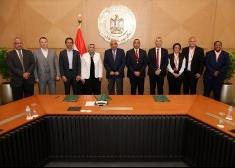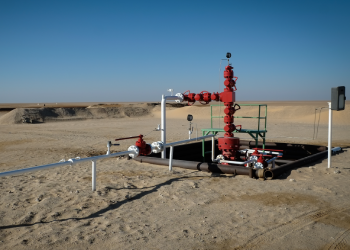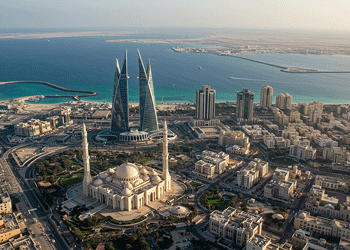Is this the end for Middle East studies?
2 April 2025
 Commentary
Commentary
Edmund O’Sullivan
Former editor of MEED
The arrest and proposed deportation of Columbia University student Mahmoud Khalil and sanctions against others involved in Gaza conflict protests at the Ivy League college in 2024 are a disaster for those involved. Whether or not deserved – the conversation still rages among political pundits – the crackdown’s wider implications for academic freedom continue to resound.
On 14 March, the White House ordered the university to tighten disciplinary and admissions procedures and end the independence of its Middle Eastern, South Asian and African Studies department or risk losing federal financial support.
It is a reminder of how much private US universities still depend on government money.
There are further threats to higher education’s financing from private donors, both in relation to the student protests and fresh scrutiny being directed towards the statements, lectures and published works of academic staff on Middle Eastern topics.
US state universities, which largely depend on public finance, are under the same pressure. And similar patterns can be seen in Canada and in the UK, where a Bristol University academic was sacked in 2021 following complaints about his stance against Zionism. Middle East specialists at universities worldwide are increasingly cautious about what they write and say.
And this is not only about contemporary matters. Anyone teaching Middle East history is obliged to cover the events leading to the 1917 Balfour Declaration and its ramifications. This could be tackled in the past provided that care was taken to ensure all versions of the event were covered. But that may now be impossible. Only one narrative is becoming acceptable.
Uncertain future
This may be a short-term storm that will eventually blow over, although that is unlikely. The war to control the Middle East narrative triggered by the 7 October 2023 attacks on Israel could even intensify if the fighting continues.
Balanced reporting on developments in the region is difficult to locate. Those seeking alternative perspectives are being driven towards the fringes of the media, though that too is under siege via online management and censorship.
All this raises profound questions. Is there any point attempting Middle East studies when it is impossible to talk about contentious moments in the region’s recent past without the threat of sanctions that could be career-ending?
Unless this issue is addressed, the discipline may lose its purpose in shedding light on recent events. Among the many victims of a new era of destruction, the demise of free-thinking Middle East faculties is one that we may in due course have the most reason to lament.
Connect with Edmund O’Sullivan on X
More from Edmund O’Sullivan:
> Trump’s foreign policy shakes global relations
> Between the extremes as spring approaches
> A leap into the unknown
> Middle East faces a reckoning
> Biden leaves a mixed legacy
> Desperate days drag on
> The beginning of the end
> The death of political risk
> Italy at centre of new reduced Europe
> US foreign policy approach remains adrift

Exclusive from Meed
-
 UAE unveils $46bn road and rail spending plan
UAE unveils $46bn road and rail spending plan6 November 2025
-
 Egypt awards contracts for 1,200MW solar plants
Egypt awards contracts for 1,200MW solar plants6 November 2025
-
 Jordan to tender second phosphate rail line
Jordan to tender second phosphate rail line6 November 2025
-
 Libya makes little progress on new oil company in Benghazi
Libya makes little progress on new oil company in Benghazi6 November 2025
-
 Bahrain’s cautious economic evolution
Bahrain’s cautious economic evolution5 November 2025
All of this is only 1% of what MEED.com has to offer
Subscribe now and unlock all the 153,671 articles on MEED.com
- All the latest news, data, and market intelligence across MENA at your fingerprints
- First-hand updates and inside information on projects, clients and competitors that matter to you
- 20 years' archive of information, data, and news for you to access at your convenience
- Strategize to succeed and minimise risks with timely analysis of current and future market trends

Related Articles
-
 UAE unveils $46bn road and rail spending plan
UAE unveils $46bn road and rail spending plan6 November 2025
Register for MEED’s 14-day trial access
The UAE’s Minister of Energy and Infrastructure, Suhail Al-Mazrouei, has announced a AED170bn ($46bn) package of national transport and road projects to be implemented by 2030.
Speaking at the UAE Government Annual Meetings in Abu Dhabi on 5 November, Al-Mazrouei said the projects form part of a comprehensive national strategy aimed at easing traffic congestion and enhancing mobility across the country.
The initiatives include expanding major roads, upgrading public transport, and implementing high-speed and light rail projects.
Road expansion projects
Road projects include adding six lanes to Etihad Road – three in each direction – increasing its capacity by 60% to a total of 12 lanes.
Emirates Road will be expanded to 10 lanes along its full length, raising capacity by 65% and reducing travel time by 45%.
Sheikh Mohammed Bin Zayed Road will also be widened to 10 lanes, enhancing capacity by 45%.
The plan further includes a study for a fourth federal highway, extending 120 kilometres with 12 lanes and a capacity of up to 360,000 trips per day.
Work has already started on the AED750m Emirates Road upgrade, which is scheduled for completion within two years.
In July, Kuwaiti contractor Combined Group Contracting Company (CGCC) announced that its local subsidiary had secured a AED685m contract to upgrade Emirates Road from the Al-Badea intersection in Sharjah to the E55 intersection in Dubai.
Rail services
For rail, Etihad Rail remains on track to launch its passenger transport services by 2026 and has received bids from contractors for the design-and-build contract covering civil works and station packages for the high-speed railway (HSR) line connecting Abu Dhabi and Dubai.
The HSR trains will have a design speed of 350km/h and an operating speed of 320km/h.
The proposed HSR programme will be developed in four phases, gradually extending connectivity across the UAE:
The first phase involves constructing a railway line connecting Abu Dhabi and Dubai, which is expected to be operational by 2030. The second phase will develop an inner‑city railway network with 10 stations within the city of Abu Dhabi. The third phase of the railway network involves constructing a connection between Abu Dhabi and Al-Ain. The fourth phase involves developing an inter-emirate connection between Dubai and Sharjah.
Light rail projects include the Abu Dhabi tram scheme, which was announced by Abu Dhabi Transport Company (ADTC) in October. It will connect Zayed International airport (AUH) with nearby areas, including Yas Island, Al‑Raha Beach and Khalifa City.
Referred to as Abu Dhabi Tram Line 4, the project will be delivered in three phases. The first phase will connect AUH with Yas Island and the residential areas of Al‑Raha Beach. Future phases will extend towards Khalifa City and serve additional destinations across Yas Island.
Construction of the first phase is expected to start next year. The tram is slated to begin operations by 2030.
 READ THE NOVEMBER 2025 MEED BUSINESS REVIEW – click here to view PDF
READ THE NOVEMBER 2025 MEED BUSINESS REVIEW – click here to view PDFMena players up the ante in global LNG production race; Investment takes UAE non-oil economy from strength to strength; Project finance activity draws international lenders back to market
Distributed to senior decision-makers in the region and around the world, the November 2025 edition of MEED Business Review includes:
> AGENDA 1: Gulf LNG sector enters a new prolific phase> INDUSTRY REPORT 1: Region sees evolving project finance demand> INDUSTRY REPORT 2: Iraq leads non-GCC project finance activity> GREEN STEEL: Abu Dhabi takes the lead in green steel transition> DIGITISATION: Riyadh-based organisation drives digital growth> UAE MARKET FOCUS: Investment shapes UAE growth storyTo see previous issues of MEED Business Review, please click herehttps://image.digitalinsightresearch.in/uploads/NewsArticle/15032097/main.jpg -
 Egypt awards contracts for 1,200MW solar plants
Egypt awards contracts for 1,200MW solar plants6 November 2025
Register for MEED’s 14-day trial access
A consortium of Egypt’s Hassan Allam Utilities Energy and Infinity Power has won contracts to develop two major solar projects with a combined capacity of 1,200MW and 720 megawatt-hours (MWh) of battery storage.
The agreements were signed with Egypt’s Ministry of Electricity & Renewable Energy and Egyptian Electricity Transmission Company (EETC).
The consortium will develop a 200MW solar plant in Benban, including 120MWh of connected battery storage, which is scheduled to reach commercial operation by the third quarter of 2026.
A second, larger 1,000MW solar plant will be built in Minya, incorporating 600MWh of storage and targeting completion by the third quarter of 2027.
The projects will be developed under the Hassan Allam Utilities Energy Platform, a renewable energy investment vehicle co-owned by Hassan Allam Utilities, the European Bank for Reconstruction & Development (EBRD) and France-based investment firm Meridiam.
The platform currently has 2.3GW of projects under development, with a total investment of about $2bn and commercial operation expected between 2026 and 2027.
Its wider pipeline includes 1.65GW of additional projects, comprising 350MW of solar and 1.3GW of wind capacity valued at $1.5bn.
Infinity Power, a joint venture of Egypt’s Infinity and Abu Dhabi Future Energy Company (Masdar), said the new projects form part of its strategy to reach 10GW of renewable capacity across Africa by 2030.
The company operates solar, wind and storage projects in Egypt, South Africa and Senegal.
US/India-based Synergy Consulting is providing financial advisory services to the consortium for the project.
The signing took place in the presence of Egypt’s Electricity Minister Mahmoud Esmat. The developments support Egypt’s goal of generating 42% of its total electricity from renewable sources by 2035.
 READ THE NOVEMBER 2025 MEED BUSINESS REVIEW – click here to view PDF
READ THE NOVEMBER 2025 MEED BUSINESS REVIEW – click here to view PDFMena players up the ante in global LNG production race; Investment takes UAE non-oil economy from strength to strength; Project finance activity draws international lenders back to market
Distributed to senior decision-makers in the region and around the world, the November 2025 edition of MEED Business Review includes:
> AGENDA 1: Gulf LNG sector enters a new prolific phase> INDUSTRY REPORT 1: Region sees evolving project finance demand> INDUSTRY REPORT 2: Iraq leads non-GCC project finance activity> GREEN STEEL: Abu Dhabi takes the lead in green steel transition> DIGITISATION: Riyadh-based organisation drives digital growth> UAE MARKET FOCUS: Investment shapes UAE growth storyTo see previous issues of MEED Business Review, please click herehttps://image.digitalinsightresearch.in/uploads/NewsArticle/15031708/main.JPG -
 Jordan to tender second phosphate rail line
Jordan to tender second phosphate rail line6 November 2025
Register for MEED’s 14-day trial access
Abu Dhabi’s National Infrastructure Construction Company (NICC), a subsidiary of Etihad Rail, is preparing to tender the second section of the phosphate railway line that will run from Ghor Al-Safi to Aqaba in Jordan.
MEED understands that the tender is expected to be issued by mid-November.
NICC received technical and commercial bids in September for a contract to construct the first section of the line, as MEED reported.
The scope of work for the railway includes civil engineering, tunnel construction, and mechanical, electrical and plumbing (MEP) works.
Bids were submitted on 22 September, according to MEED’s information.
In April, a French-Swiss joint venture of Egis and Arx was awarded the design consultancy contract for the project.
Etihad Rail announced in September last year that it had signed a memorandum of understanding (MoU) worth $2.3bn with Jordan’s Transport Ministry and local companies to develop the phosphate railway line.
In an official statement, Etihad Rail said it had signed an agreement with Jordan to build, operate and maintain the project.
The statement added that additional MoUs were signed with Jordan Phosphate Mines Company and Arab Potash Company to transport 16 million tonnes a year of phosphate and potash from mining sites to the Port of Aqaba via the Jordanian railway network.
The MoUs also cover the manufacture and supply of rolling stock; the construction of terminals in Aqaba, Ghor Al-Safi and Shidiya; and the maintenance, repair and operation of the railway line.
Project history
In 2015, Jordan’s Transport Ministry tendered a contract to construct the Shidiya rail link, intended to transport 6 million tonnes a year of phosphate from mines in Shidiya to Wadi Al-Yutum, near Aqaba.
In November of that year, a joint venture of China Communications Construction Company and the local contractor Masar United was confirmed as the lowest bidder and was awaiting the formal award to build the 21-kilometre spur line.
The project was subsequently put on hold due to funding issues.
 READ THE NOVEMBER 2025 MEED BUSINESS REVIEW – click here to view PDF
READ THE NOVEMBER 2025 MEED BUSINESS REVIEW – click here to view PDFMena players up the ante in global LNG production race; Investment takes UAE non-oil economy from strength to strength; Project finance activity draws international lenders back to market
Distributed to senior decision-makers in the region and around the world, the November 2025 edition of MEED Business Review includes:
> AGENDA 1: Gulf LNG sector enters a new prolific phase> INDUSTRY REPORT 1: Region sees evolving project finance demand> INDUSTRY REPORT 2: Iraq leads non-GCC project finance activity> GREEN STEEL: Abu Dhabi takes the lead in green steel transition> DIGITISATION: Riyadh-based organisation drives digital growth> UAE MARKET FOCUS: Investment shapes UAE growth storyTo see previous issues of MEED Business Review, please click herehttps://image.digitalinsightresearch.in/uploads/NewsArticle/15031475/main.jpg -
 Libya makes little progress on new oil company in Benghazi
Libya makes little progress on new oil company in Benghazi6 November 2025

Little progress has been made on plans for a new Libyan oil company headquartered in Benghazi, according to industry sources.
In August, Libya’s National Oil Corporation (NOC) announced plans to create a new company named Jalyanah for gas exploration and production, with its headquarters in Benghazi.
The plans were announced in a letter written by NOC’s acting chairman Masoud Suleiman, who said that the company would focus on developing gas discoveries in concession MN 7.
The concession is currently operated by Arabian Gulf Oil Company (Agoco), which is a subsidiary of NOC.
One source said: “There has been no progress on the planned formation of the new company. Like many things in Libya, the formation of this new company has been complicated by the country’s political situation.
“It’s widely expected that there will be slow progress on the formation of the company, and some stakeholders believe that it may never be created because of political opposition from some quarters.”
Libya has effectively had two rival governments since 2014, when power split between the country’s eastern and western regions following the collapse of national unity.
In August, Suleiman said that negotiations were under way with an international consortium that included Italy’s Eni, France’s TotalEnergies, the UAE’s Adnoc and Turkey’s TPAO.
Libya’s NOC said the new company would be responsible for projects to fast-track production from undeveloped gas fields to meet domestic electricity demand and reduce reliance on diesel.
It warned that western Libya faces a sharp decline in gas supplies by the end of 2026 and said the formation of the company was intended to protect state finances, meet export commitments to Italy and avoid penalty payments.
 READ THE NOVEMBER 2025 MEED BUSINESS REVIEW – click here to view PDF
READ THE NOVEMBER 2025 MEED BUSINESS REVIEW – click here to view PDFMena players up the ante in global LNG production race; Investment takes UAE non-oil economy from strength to strength; Project finance activity draws international lenders back to market
Distributed to senior decision-makers in the region and around the world, the November 2025 edition of MEED Business Review includes:
> AGENDA 1: Gulf LNG sector enters a new prolific phase> INDUSTRY REPORT 1: Region sees evolving project finance demand> INDUSTRY REPORT 2: Iraq leads non-GCC project finance activity> GREEN STEEL: Abu Dhabi takes the lead in green steel transition> DIGITISATION: Riyadh-based organisation drives digital growth> UAE MARKET FOCUS: Investment shapes UAE growth storyTo see previous issues of MEED Business Review, please click herehttps://image.digitalinsightresearch.in/uploads/NewsArticle/15029084/main.png -
 Bahrain’s cautious economic evolution
Bahrain’s cautious economic evolution5 November 2025

Bahrain’s economic outlook is currently defined by a steady but cautious sense of forward motion. The country has succeeded in maintaining growth driven almost entirely by the non-oil economy, while its reliance on hydrocarbons, though diminished, still shapes the fiscal landscape.
Public debt remains high and continues to constrain government spending, yet the state has avoided severe austerity and instead adopted a gradual approach to balancing economic reform with social stability.
Real GDP is expected to expand by 2.9% in 2025 in a slight improvement on the 2.6% growth rate in 2024, according to the IMF, and in an indication that non-oil sectors are gaining traction and that domestic demand and investment are holding up.
In 2026, growth is projected to rise further to 3.3%, suggesting that the economy is picking up momentum.
There have also been positive signs in foreign direct investment (FDI). In the second quarter of 2025, FDI inflows rose by 5.4%, according to the Ministry of Finance, led by the financial and insurance services sectors.
At the same time, the kingdom’s national debt – as a consequence of its persisting fiscal deficit – now stands at around 140% of GDP and weighs heavily on public finances.
Efforts at fiscal consolidation, such as subsidy reforms and spending controls, have been gradual, reflecting the government’s cautious approach to balancing fiscal responsibility with investment. Still, the underlying pressures are significant, and the cracks in Bahrain’s fiscal sustainability will remain a key risk factor for the foreseeable future.
Non-oil expansion
Looking closer at recent growth, the economy expanded by 2.5% year-on-year in the second quarter of 2025, driven largely by a 3.5% surge in non-oil activity.
The non-oil sector is now responsible for over 80% of GDP and has become the main engine of growth, led by the finance, trade, real estate and hospitality sectors. Pro-business reforms and foreign investment incentives have supported this.
Financial services remain at the centre of Bahrain’s non-oil transition, with the country having long positioned itself as a regional banking and finance hub. In recent years, its regulatory openness and fintech-friendly environment, including in emerging spaces such as crypto, have become increasingly defining competitive advantages.
Flexible licensing, direct regulatory engagement and support from initiatives such as Bahrain FinTech Bay and the Central Bank of Bahrain's regulatory sandbox framework have all bolstered the country’s competitiveness – and the result has been an uptick in fintech, investment management and digital banking activity.
Tourism, too, has evolved into a structural contributor to national growth. Rather than attempting to compete with the scale and spectacle of Dubai or Doha, Manama has focused on cultivating a hospitality sector geared towards short-stay travel, weekend tourism within the Gulf, business events and cultural programming.
The opening of new hotels and entertainment venues, combined with the resumption of Gulf Air’s direct route to the US, has reinforced Bahrain’s strategic push to widen its global connectivity.
Manufacturing and logistics continue to play an important role, anchored by its Alba-led aluminium production and supported by Bahrain’s advantageous trade relationships, particularly its free trade agreement with the US.
While not the flashiest component of the economy, this industrial base provides resilience and employment diversity that helps counterbalance the more volatile elements of its service-sector expansion.
Real estate and regulation
The real estate and construction sector has grown in response to these economic shifts, but in a measured and demand-driven way. Unlike the rapid speculative development cycles observed elsewhere in the Gulf, Bahrain’s residential market has expanded moderately, with consistent demand coming primarily from middle-income Bahraini nationals and supported by subsidised housing and mortgage assistance programmes.
High-end residential developments exist but are not oversaturated, and the market overall has avoided the sharp imbalances seen in larger regional economies.
Large waterfront and mixed-use developments, such as Bahrain Bay and Marassi Al-Bahrain, outline the government’s focus on sustainable urban liveability and integrated community design – a key theme of the government’s 2023-26 national plan – rather than architectural statements.
Public infrastructure spending and hospitality expansion continue to sustain construction activity, though rising material and labour costs remain a concern. Commercial real estate is also stabilising after a period of oversupply, with new demand emerging from expanding financial and professional services firms.
From a regulatory perspective, the real estate sector has also been undergoing gradual liberalisation, especially in relation to foreign property ownership. While Bahrain has long allowed foreign nationals to own property in designated freehold zones, recent reforms have focused on expanding these zones as well as simplifying regulatory procedures and linking property ownership more directly to residency and long-term investment incentives.
The regulatory adjustments have also made it easier for foreign investors to own commercial office and retail space.
Taken together, these trends show a country reshaping its economic identity through deliberate adaptation rather than dramatic reinvention. Bahrain is not pursuing the hyper-scaled transformation seen in Saudi Arabia or the branding-driven global city strategy of Dubai.
Instead, it is cultivating a model grounded in regulatory agility, human capital development, manageable growth and incremental diversification.
At the same time, high debt levels and a narrowing fiscal space continue to pose risks to long-term stability and weigh on the kingdom’s economic trajectory.
Yet for now, the kingdom’s recent progress is something to be celebrated, even as its vulnerabilities are equally real.
Sustaining momentum will require continued investor confidence, tighter fiscal management and progress toward addressing longstanding social and political pressures, particularly those affecting youth employment and public trust.
The question is whether its governance, fiscal policy and social framework can continue to evolve at a pace that matches the economic transformation already under way.
MEED's December special report on Bahrain also includes:
> BANKING: Mergers loom over Bahrain’s banking system
> OIL & GAS: Bahrain remains in pursuit of hydrocarbon resources
> CONSTRUCTION: Bahrain construction faces major slowdownhttps://image.digitalinsightresearch.in/uploads/NewsArticle/15025369/main.gif

